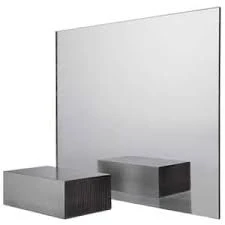

The Allure of Frosted Glass
Frosted glass, a captivating and versatile material, has carved a significant niche in contemporary architecture and design. Distinguished by its translucent quality and textured surface, frosted glass provides an intriguing blend of privacy and light, making it a preferred choice for a variety of applications—from residential spaces to commercial environments.
One of the primary reasons for the popularity of frosted glass is its ability to diffuse light. Unlike clear glass, which allows for the unfiltered passage of light, frosted glass scatters it, creating a soft, ambient glow. This quality not only enhances the aesthetic appeal of a space but also serves a practical purpose. For instance, in bathrooms or conference rooms, frosted glass allows natural light to permeate while obstructing visibility, thus maintaining privacy without sacrificing illumination. This balance is especially vital in modern living environments, where open floor plans often blur the boundaries between spaces.
In residential settings, frosted glass is frequently employed in various fixtures, such as shower doors, cabinet fronts, and room dividers. The soft texture of frosted glass adds a layer of sophistication and elegance, transforming ordinary spaces into stylish retreats. For example, a frosted glass shower door can elevate a bathroom's design while providing the necessary privacy for its users. Additionally, incorporating frosted glass in cabinetry can create a sense of spaciousness and lightness in kitchens and living rooms, as it allows the light to filter through without revealing its contents.

Beyond its practical uses in the home, frosted glass has found a place in commercial applications as well. Many offices utilize frosted glass partitions to create separate workspaces, fostering a blend of openness and privacy. This design choice helps to stimulate collaboration while also allowing individuals a personal space to concentrate. Furthermore, frosted glass can be used in the design of storefronts, where it can impart a modern touch while also featuring branding elements that remain subtle yet noticeable. The use of frosted glass in signage has gained traction, combining functionality with artistry.
The process of creating frosted glass typically involves sandblasting or etching, which gives it its distinct frosty appearance. This manufacturing method allows for a wide range of patterns and designs, further enhancing its appeal. Customizable options enable designers to incorporate unique motifs, transforming frosted glass into a canvas for creativity. From geometric shapes to organic patterns, the possibilities are virtually limitless.
Moreover, frosted glass is increasingly being embraced for its sustainability characteristics. It can contribute to energy efficiency by improving the thermal insulation of a building when used in windows and doors. By reducing the amount of direct sunlight entering a space, frosted glass helps maintain comfortable indoor temperatures, potentially lowering heating and cooling costs. As awareness of environmental issues grows, the demand for sustainable building materials continues to rise, positioning frosted glass as a favorable choice in eco-friendly architecture.
In conclusion, frosted glass is much more than a functional material; it is a design element that seamlessly merges aesthetics with practicality. Whether enhancing the tranquility of a home or fostering collaboration in an office, its charm lies in its dual nature—as a means of light diffusion and privacy. As trends in architecture and interior design continue to evolve, frosted glass will undoubtedly remain a fixture in creating beautiful, functional spaces that cater to the modern lifestyle.